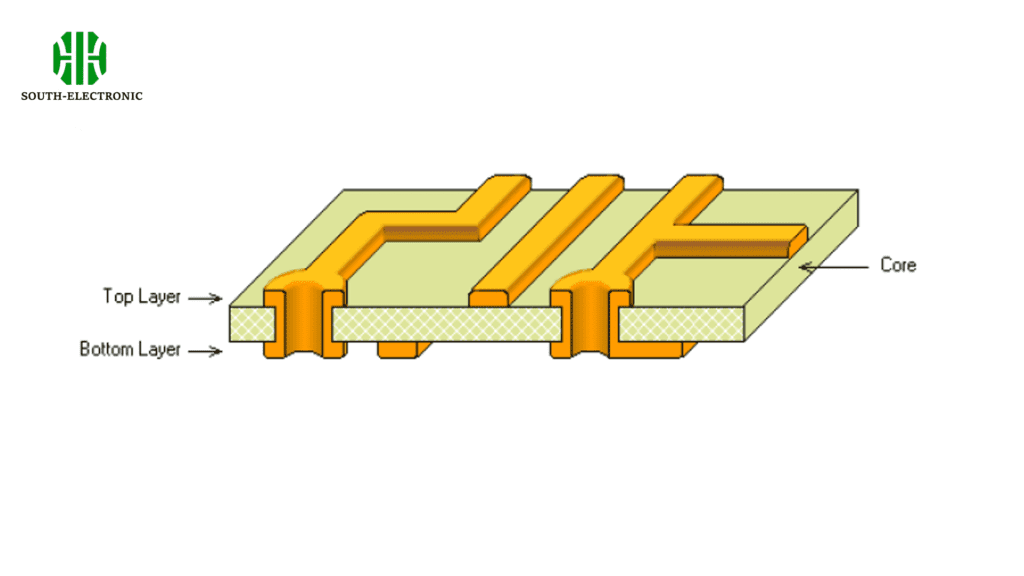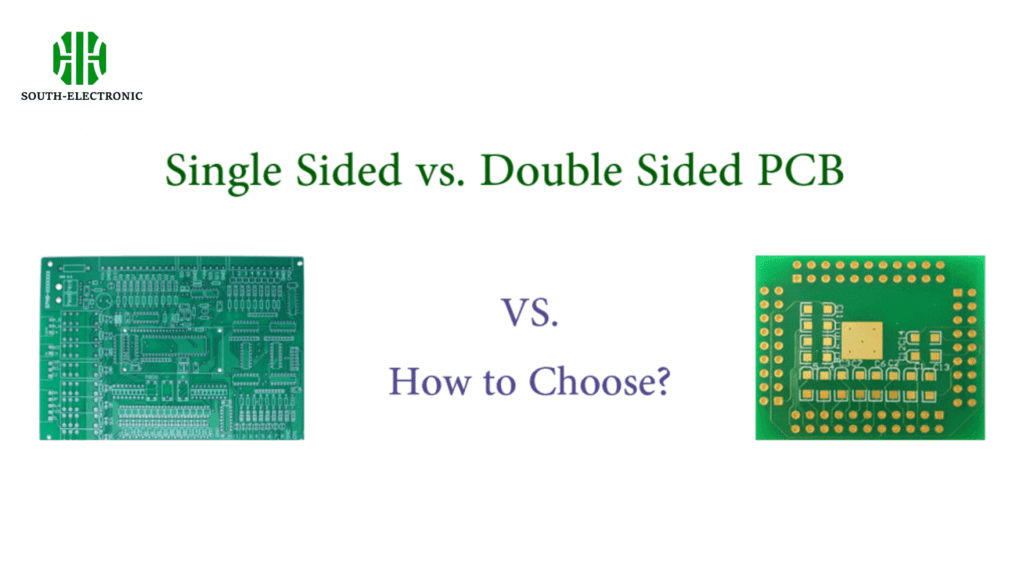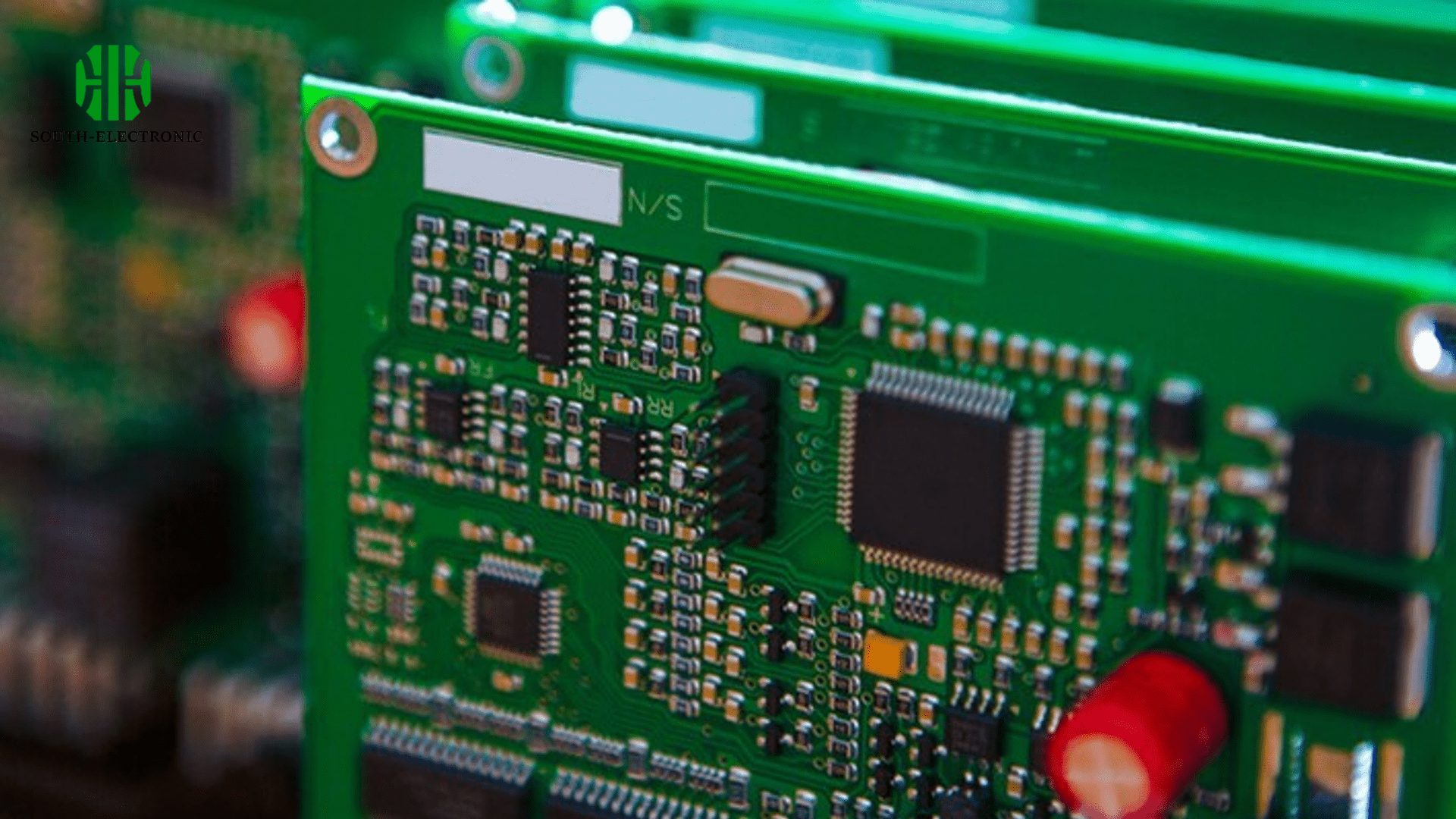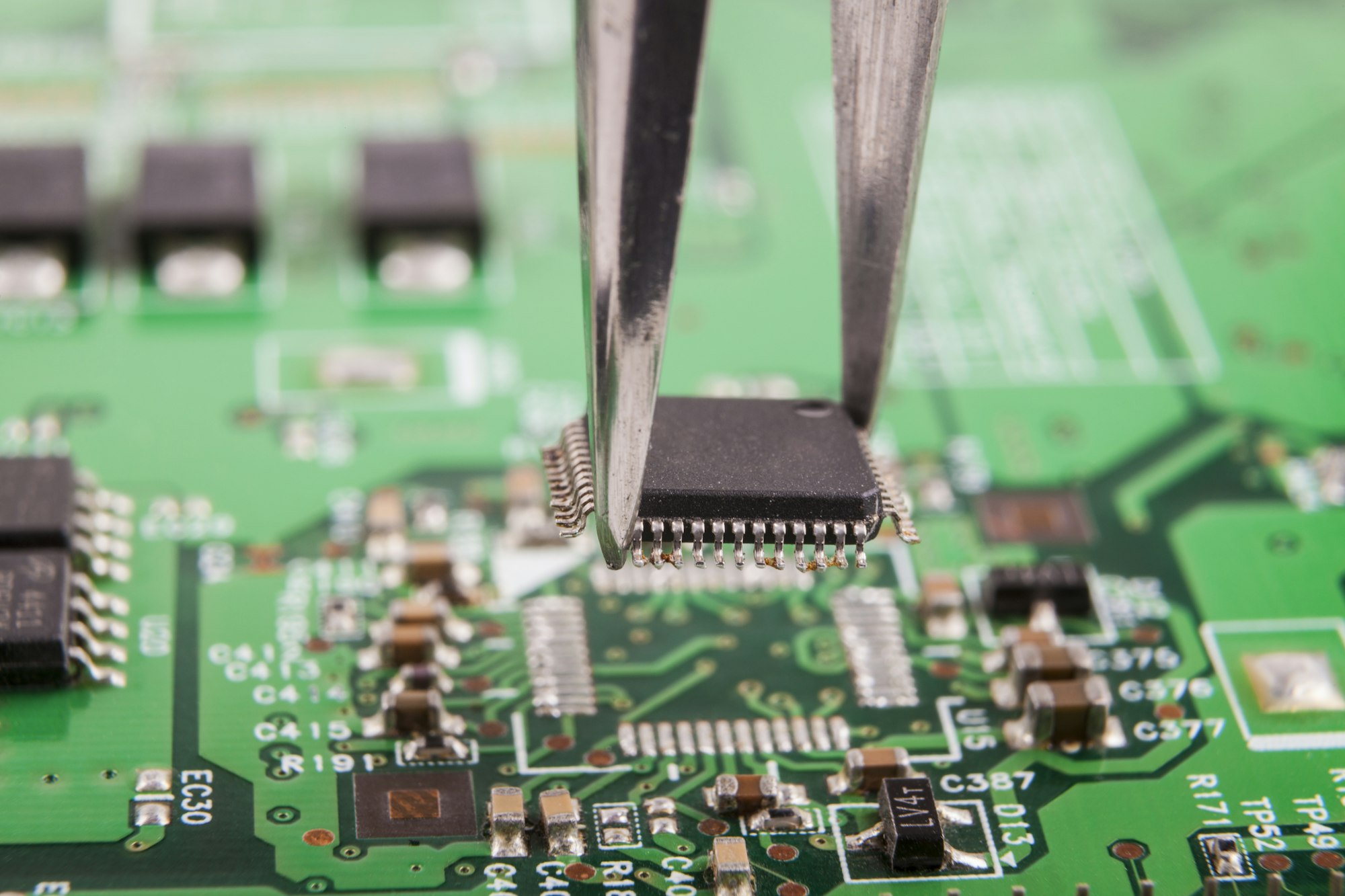Double-sided PCBs offer increased circuit density as the second layer means there is more capacity for PCB components than on single-sided PCBs. With this increased space, double-sided PCBs use more complex circuitry, making them great for advanced electronic systems such as lighting and car dashboards. hey allow for greater component density, which is essential for modern electronic devices that require high performance in a small form factor. This advancement supports the development of more sophisticated electronic systems in various fields, from consumer electronics to industrial applications.
What are the two sides of a PCB called?
- Primary side (top side): This is typically where the majority of the components are placed.
- Secondary side (bottom side): This is used for additional components and soldering.

Where are double-sided PCBs used?
Double-sided PCBs are versatile and find applications in various electronic devices. Some common uses include:
- Power supplies: Double-sided PCBs can handle higher power loads and improve heat dissipation.
- HVAC systems: They enhance control and efficiency in heating, ventilation, and air conditioning systems.
- Power conversion: Used in converters and inverters for efficient energy management.
- LED lighting: They enable more intricate and efficient LED designs.
- Printers: Facilitate complex circuit layouts in modern printers.
- Hard drives: Used in the control and data storage systems.
- Phone systems: Improve functionality in communication devices.
- Vending machines: Enhance the reliability and efficiency of vending mechanisms.
What is the difference between single-sided PCB and double-sided PCB?

Single-sided PCBs have components on only one side of the board, whereas double-sided PCBs have components on both sides. This fundamental difference leads to several advantages for double-sided PCBs:
| Feature | Single-sided PCB | Double-sided PCB |
|---|---|---|
| Components Placement | One side | Both sides |
| Design Complexity | Simple | Complex |
| Component Density | Lower | Higher |
| Signal Integrity | Moderate | High |
| Thermal Management | Basic | Advanced |
| Manufacturing Cost | Lower | Higher |

